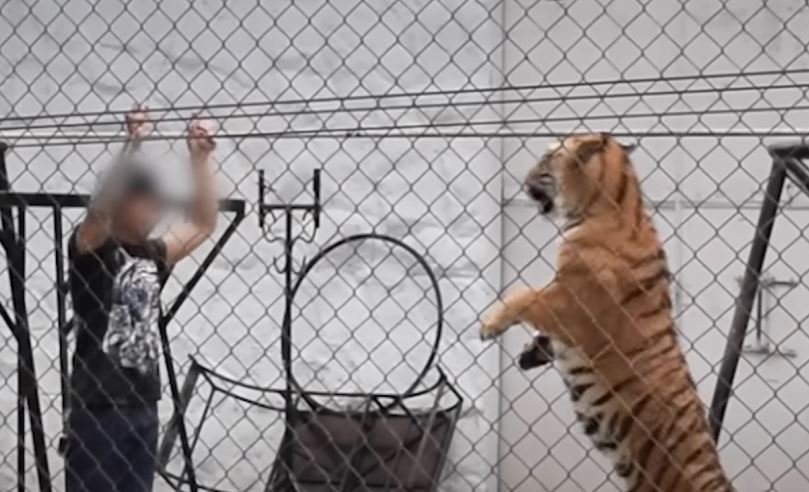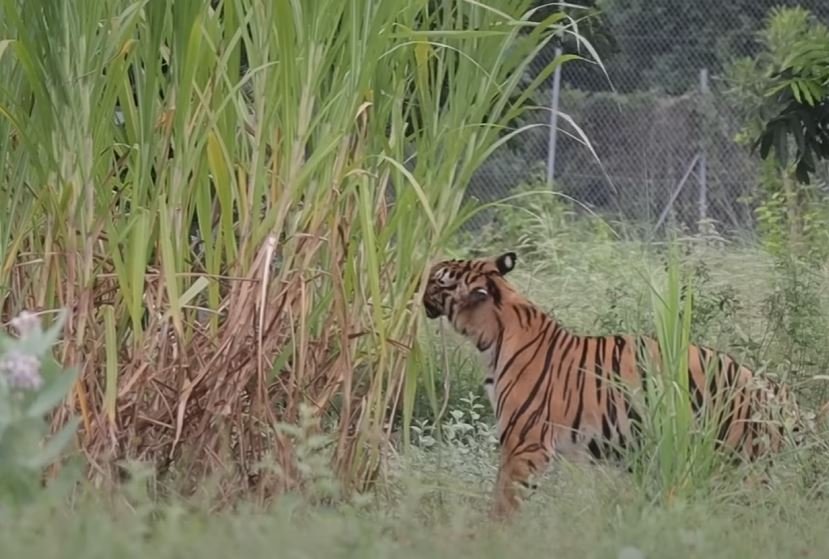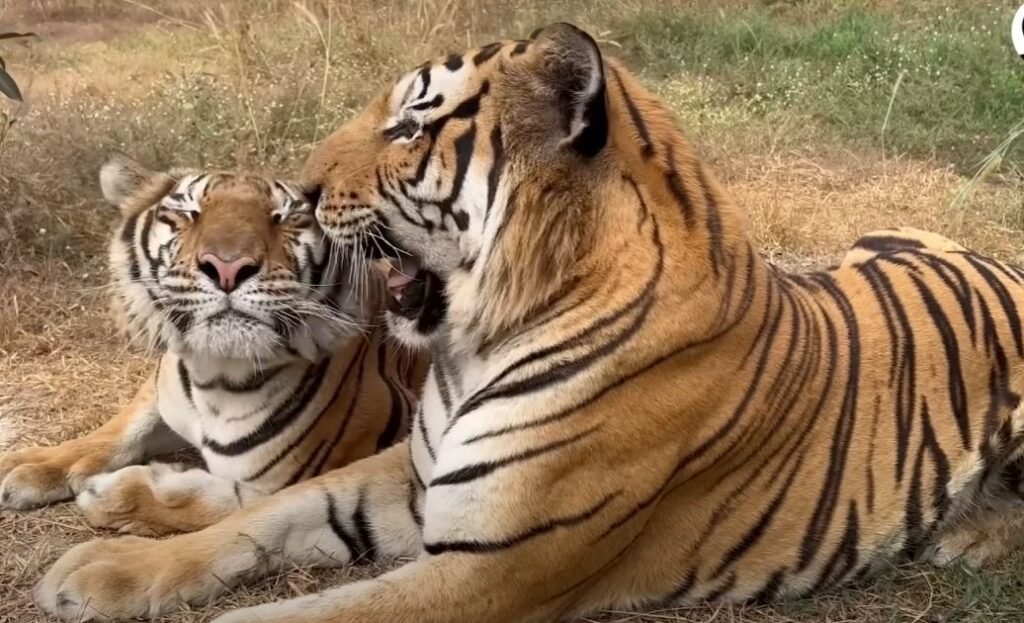Imagine living your whole life imprisoned in a tiny cage, unable to run, or even feel the ground on your feet. For Susu, a tiger housed at the Phuket Zoo, the reality was that. Years of existence there defined her. Chained up and blocked off from the outer world, Susu’s life consisted of continuous confinement and forced interaction with visitors.
But Susu’s story is not just one of hardship. It’s a tale of healing, hope, and incredible transformation, one that proves the power of giving an animal the freedom to live the life it was meant to lead.
Susu in Captivity: Life in Chains – The Battle

Restraints were all Susu had to deal with during her stay at the zoo. Her mental and physical health depend on her being free to move about, hence being tethered to a little cage interfered with that. All for the zoo’s commercial benefit, she was compelled to amuse guests and stand for pictures instead of sprinting across fields or exploring new regions. Her universe was limited to her cage; it is terrible to consider how imprisoned she must have felt.
She wasn’t by herself either. Because they were so confined, many of the zoo’s animals lived their whole lives pacing back and forth instead of as nature intended. The work of the Wildlife Friends Foundation (WFFT) was about to alter Susu’s path.
A Glimpse of Hope: Susu’s First Step Toward Freedom

The turning point for Susu came when she was rescued and moved to a sanctuary, a haven where she could start her new life. For the first time, she was free to roam, and stepping onto the grass was a huge milestone for her. Imagine being freed after years of captivity—her initial uncertainty was palpable as she took in the wide-open space.
But soon, Susu began to embrace her newfound freedom. She wandered through nature, sniffing the air and stretching her legs, rediscovering what it meant to be a tiger. It was clear that, despite her years in confinement, she was adapting quickly to the sanctuary’s natural surroundings, a sign of her resilience and ability to heal.
This moment reinforced the reasons behind the rescue efforts: species like Susu deserve to live freely, thrive in their natural habitats, and experience the world as they were meant to.
WFFT’s Safe Haven: The Sanctuary

A refuge for recovery, the WFFT is more than just a place of rescue. This place gives Susu and other animals the space and care they need to heal on the emotional as well as physical levels. Comprising more than 17 acres of natural habitat, the sanctuary offers rescued animals the chance to lead their natural lives free from captivity.
Still, the WFFT aims for more than just providing a safe setting. They also aim to raise public knowledge of the need of preserving nature and the extensive animal abuse. “This is our main goal—to give rescued animals a fresh start, regardless of their age or background,” the crew added.
Susu has a fresh life with all of this effort. The tiger is learning what it is to be wild; she is no longer a prisoner in a little cage.
An Observable Reminder: Every Animal Deserves to Be Free
Susu’s transformation is a powerful reminder of the importance of animal sanctuaries and the urgent need to protect animals from cruelty. Her story highlights the resilience of animals and their remarkable ability to heal from the trauma they have experienced when given the right environment and care.
While Susu’s story has a happy ending, many animals are still trapped in conditions like hers. It’s crucial to continue raising awareness about the suffering animals endure in captivity and to support organizations like WFFT. Susu’s journey proves that, with the right care, even the most broken animals can heal and find the life they were always meant to live.
Susu is now more than just a tiger that was once in chains. She is a living testament to the power of freedom, compassion, and the collective effort to restore dignity to animals everywhere.







